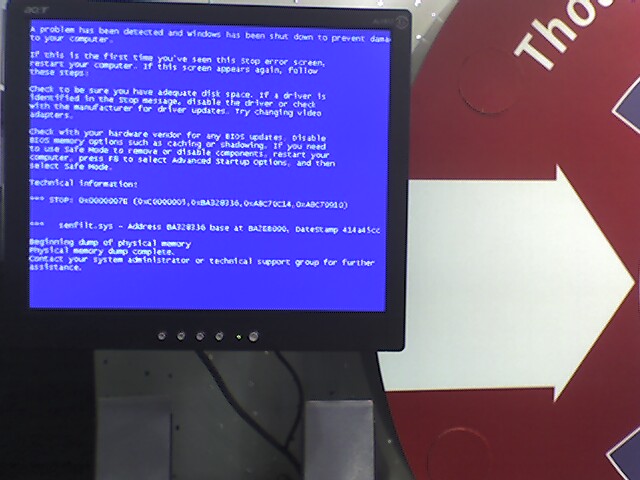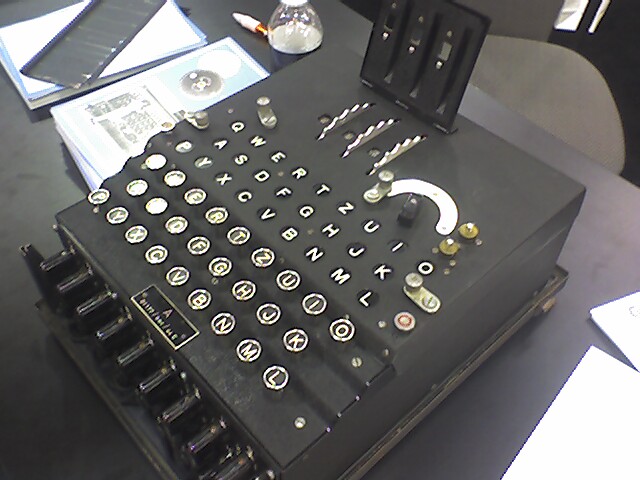Bruce Schneier has posted a restaurant guide to San Jose, which reveals his particular taste in food as well as humor. I found it enjoyable and informative and noted that he, and his wife Karen, hate the idea of corporate food because corporations are not legally bound to serve the interests of the consumer:
Look up the 1919 court decision Dodge v. Ford Motor Co.; it’s easy to find with
Google. That case still stands, and it upholds the fundamental legal principle that a corporation must put the interests of its shareholders above all other interests; and that it has no legal authority to serve any other interests, customers included. A corporation can only serve its customers’ interests inasmuch as it also serves its shareholders’ interests. Otherwise, as in Dodge v. Ford, the shareholders can sue.
The Super Size Me documentary showed the dangers of being an uninformed consumer, and how the giant food corporations can get an upper hand on average people by abusing their trust. Some suggest that putting regulations on these corporations will have a chilling effect on the market, but the opposite is generally true. The problem is that the market of “nutrition” slides into a market for “marketing”, which means those who actually try to deliver nutritous meals are sidelined by the deceptive and more profitable substitutes. “Honey, are we having snake-oil for dinner again tonight? It’s my favorite!”
In related news, I just read about the tragic story of a man who paid money into a health-insurance company only to find out that they had no intention of helping him afford health-care treatment. If you think markets do not need regulation, try to figure this one out.
When [KMBC’s] Flink talked to Tracy Pierce, his cancer was attacking his body. Despite being fully insured, every treatment his doctors sought for him was denied by his insurance provider. First-Health Coventry deemed the treatments were either not a medical necessity or experimental.
“I don’t know what else to do but just wait,” Tracy Pierce said last May.
As he waited, his doctors appealed again and again, including a 27-page appeal spelling out that Tracy Pierce would die without care. Coventry dismissed each request.
“It’s purely economical. You never see an insurance company try to block an inexpensive test,” said William Soper.
Soper leads a group of doctors who filed a lawsuit last year against insurance providers. This week, Soper went to Jefferson City to lobby legislators for change.
“And you know, it’s not going to get better anytime soon. It’s going to get worse,” said Myra Christopher, who is the president and chief executive officer of the Center for Practical Bioethics.
It is hard to read this type of news and then review the Coventry Health Care, Inc. website, which boasts how shareholders are richly rewarded by sound financial management.
Coventry Health Care, Inc. (NYSE:CVH) today reported operating results for the quarter ended December 31, 2005. Operating revenues totaled $1.72 billion for the quarter, a 24.2% increase over the fourth quarter of 2004.
Their mission statement seems plausable for a health-care provider:
To be the recognized leader in providing quality, accessible, and affordable health care benefits and services that maintain and improve the quality of life of all our members and the communities we serve.
But the only news that this corporation reports seems to be related to pleasing their shareholders:
Barron’s has repeatedly made note of Coventry’s focus on keeping costs down, indicating that Coventry shared in common with 2005’s other top 5 finishers “a tightfisted approach to overhead� and an “innovative use of information technology.�
[…]
Among all companies named to Forbes’ list in the category of Health Care Equipment & Services, Coventry was recognized in the 2005 edition as having had the highest 5-yr annualized total return, a distinction the company repeated in the 2006 edition.
[…]
Among all Fortune 500 companies, Coventry was also cited in the 2005 edition as having had the third highest total return to shareholders over the prior five-year period.
[…]
The Wall Street Journal again named Coventry to its list, and cited it as having the seventh highest five-year returns among all companies. As in the 2004 edition, Coventry again ranked #1 among all health plans nationally based on five-year performance.
Take a look yourself, ALL the news items they cite are related to shareholder returns. Not a single news item related to their mission statement!! Any chance they would post a news page where they actually say something like “we helped someone stay healthy today” or give some testimonials? I couldn’t find one. In light of the news they favor, maybe they should change their mission statement to “we keep overhead down and give great returns to shareholders”.
This of course begs the obvious question what is the antidote to the powerful incentives that make companies deny treatment in order to achieve financial accolades? Who can answer? Could it be the new Coventry CEO (ex-CFO), Dale B. Wolf who reported a cool $4,364,807 income for 2005, and $1,153,490 in exercised stock options (and $16,733,300 in vested, $2,632,500 in non-vested options)? Not bad for a company that was reported in 2005 to have a $5.3 billion revenue with $337.12 million net and $3.72 earnings per share.
Ouch. Tracy Pierce died while Coventry reported a $337 million net. Something tells me if you take this case to the feds right now, they might have a hard time understanding the problem. Even though the public pays for an ambulance that the AP says Vice President Cheney always has on call, I suspect that Bush and Cheney never actually bother with health-care insurance or consumer-grade care because they simply do not trust the system to take proper care of them.
We are told a corporation in America is legally a person (as in corporeal) and yet how many of us really know the person that we entrust with our lives or health? What do you do when you get cancer and the person you paid in advance to take care of you says “sorry, I don’t think you’re worth the time/expense”? And that is not even to touch upon the insurance premiums that are forcing the cost of care to skyrocket. The health-care crisis is solidly upon America, and detailed insider information (about corporations) is power.
One final thought: I always see innocent kids drinking “Rockstar” and I wonder if they know or care who is behind the label. Does it matter? Based on the above, I would hope most people might say yes. We need information to make the market work, and yet most people find information gathering expensive and clumsy. Journalists used to make a living out of delivering quality information, but even that market has eroded in terms of quality to the point where individual contributors and boutique outfits (those less beholden to the shareholder) are a more reliable source of data.
Anyway, back to Rockstar, Russell Goldencloud Weiner is the founder and CEO of the company, which is based in Las Vegas, Nevada. It turns out he is the son of Michael Weiner, ala the extremist right-wing talk-show host Michael Savage. You might have heard of Savage as the guy who said on air that the US should murder millions of Arabs, or the guy who claims that “radical homosexuals” and “radical Islamists” are “one and the same, they’re all terrorists”. Maybe you heard about the time when he said Clinton would recover from heart surgery only because “hell was full”. And then there’s the time he explained to his listeners “When you hear ‘human rights,’ think gays. […]think only one thing: someone who wants to rape your son”.
So, speaking of sons, is there a political connection between the younger Weiner and the Savage? Sure enough, Salon reports that they are both in the business together:
Savage’s son, Russ Weiner, kicked off the show. With his spiky, dyed-orange hair and calculated scruffiness, he was reminiscent of Dr. Evil’s son Scott from the Austin Powers movies. The resemblance was confirmed when Weiner proclaimed, “I’m proud to be the son of Savage!” The 30-something Weiner is the founder of RockStar, an energy drink that he developed with his dad, drawing on Savage’s previous career as a Marin County herbalist and ethnobotanist named Michael Weiner. RockStar’s herbal liver-cleansing formula is supposed to enable drinkers to “party like a rock star,” which presumably means drinking and doping. Generous free samples had been passed out to the crowd on the way in. It lived up to its hype: The antifreeze-colored, cough-syrup-flavored beverage can only be enjoyed if you’re taking drugs.
But while Weiner has cashed in on other people’s bad behavior, he made it clear that he’s a family-values kind of guy.
Right. Drink up everybody. Here’s to healthy information.


